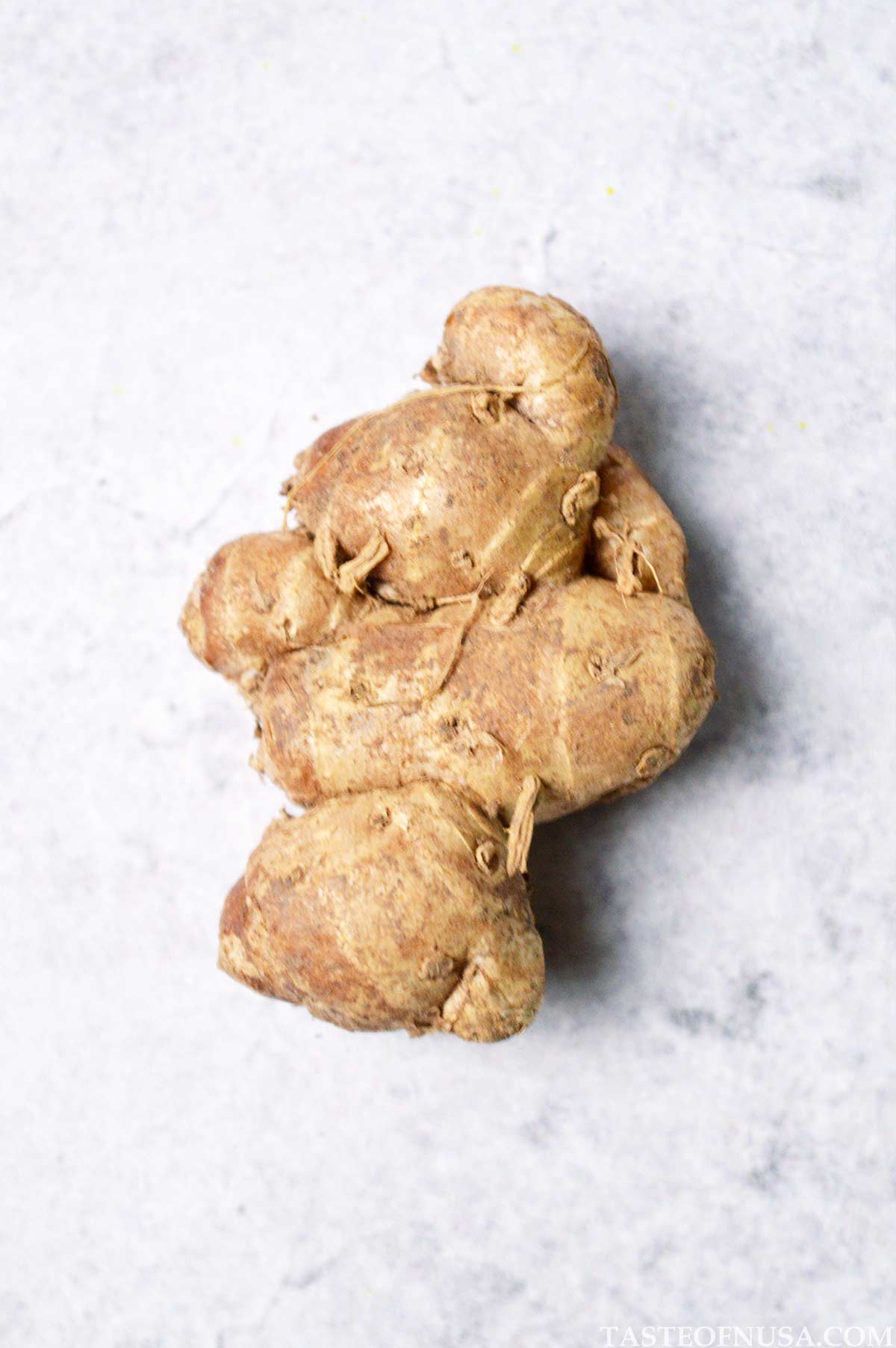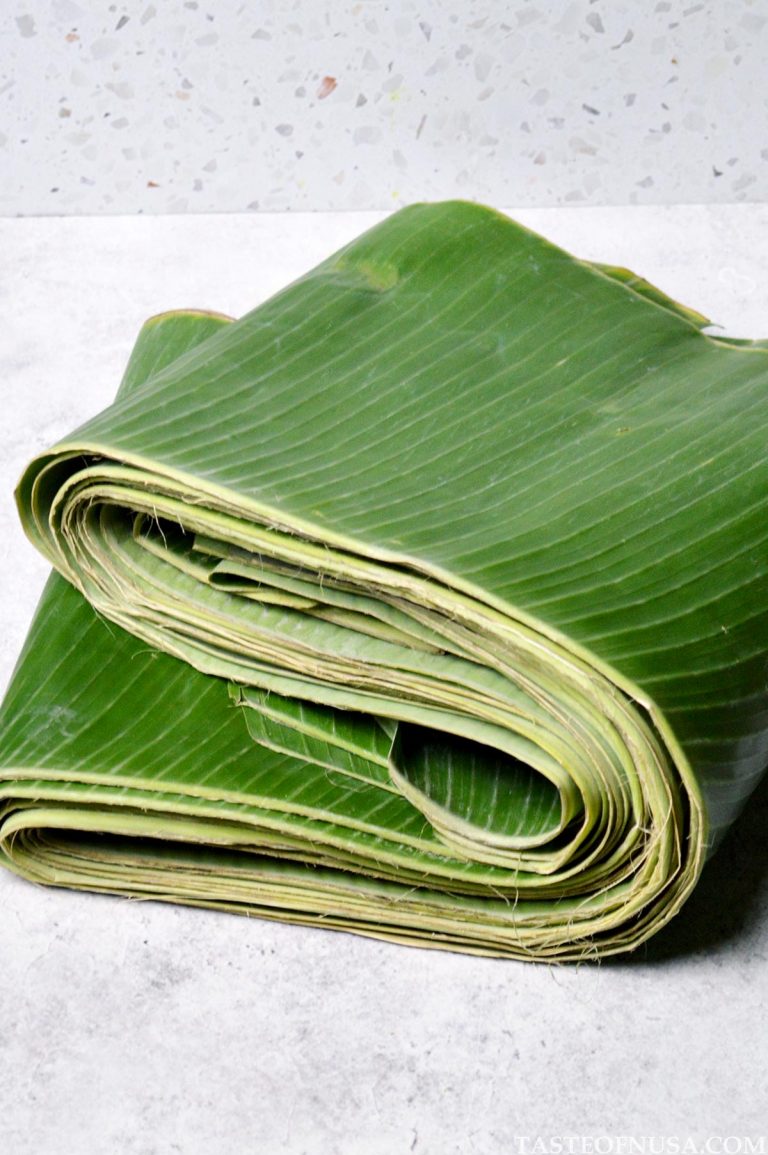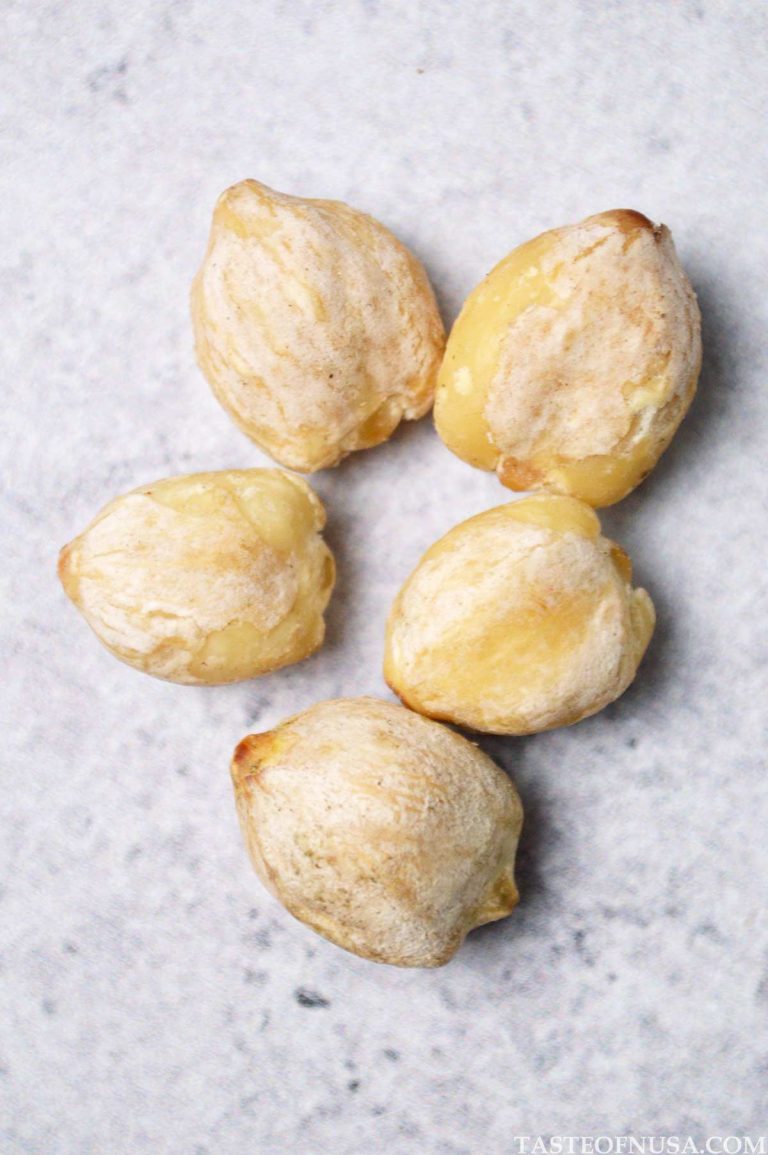Sand Ginger
The pungent, aromatic sand ginger is one of the indispensable characteristics of Indonesian traditional dishes. This rhizome plant is not only known for its culinary use but has also been used as traditional medicine in Indonesia.

Other Names
- Kaempferia galanga (scientific name)
- Kencur (Indonesian)
- Cekur (Malay)
- Lesser galangal
- Aromatic ginger
- Cutcherry
- Resurrection lily
What is Sand Ginger?
Sand ginger is a rhizome in the same family as ginger and turmeric. It is a close relative of galangal. There are two types of galangal that are the most commonly used in cooking: greater galangal and lesser galangal. The name ‘galangal’ is referred to as greater galangal, while sand ginger is referred to as lesser galangal.
As the names indicate, the most obvious difference between the two spices is their size. Sand ginger is typically smaller and thinner than those of greater galangal. Sand ginger has a similar shape and color to ginger, but is much smaller, darker brown on the outside, and has whiter flesh inside. However, the texture of ginger is relatively soft and easy to grate whereas sand ginger is woody and coarse. The smell of sand ginger is also more aromatic and stronger than ginger, and therefore it is sometimes called aromatic ginger.
In some parts of Indonesia, some local traditional dishes acquire their unique taste thanks to sand ginger. It is also one of the seven most important and most often used herbs in jamu (a traditional Indonesian herbal drink). The rhizome is also used as traditional medicine in China and other South Asia since ancient times. Mainly for treatment of respiratory and digestive ailments, infectious diseases, alleviating pains, and relaxing mind and body. Aside from those, the roots and leaves of sand ginger are used to extract the essential oil, that is used in perfumes and cosmetics.
What Does Sand Ginger Taste Like?
Sand ginger has an intense peppery camphor taste. It also tastes a little bit bitter with warm notes. The flavor is more like a medicine with a noticeable piney astringency.
The herb is used in several Indonesian like urap (mixed vegetables with seasoned grated coconut), pecel (Javanese salad with peanut sauce), rempeyek (peanut rice crackers), and some sauteed vegetable dishes. Its distinct aroma and taste of sand ginger really characterize those dishes.
Where to Buy
Sand ginger is commonly available in Asia but is an exotic ingredient in other continents. The fresh rhizome is used only in Indonesian and Malaysian kitchens. It can be grated, chopped, or crushed.
Compared to other herbs and spices, finding sand ginger can be a challenge but it is not impossible. Most often though you will find this in dried and powdered form which is fine. You can find them at a well-stocked Chinese market with the Chinese characters on the package match 沙薑粉 (shā jiāng fěn) meaning sand ginger powder or 沙薑片(shā jiāng piàn) for dried ginger slices. If you can’t find any, you can buy the dried sand ginger slices online.
How to Substitute Fresh Sand Ginger with Powder
A rough guide to substitute fresh with ground sand ginger is 1-inch fresh ginger = 1 tbsp freshly grated sand ginger = 1 tsp sand ginger powder.
Substitution
The rhizome offers a unique flavor that may not be easy to duplicate. If you are having a hard time finding this spice, then you can substitute it with the same amount of galangal, which poses a similar aroma and taste. While galangal lacks some aspects of sand ginger’s flavor, it is easily the closest option that you will find anywhere.
Storage
Store fresh root, intact with the skin, in the refrigerator in a plastic bag or airtight container for a week or two. Make sure to keep it as dry as possible, not damp or wet. If you find molds or rotten parts, just cut them and keep the remainder.
It also freezes well for up to two months, but make sure they are well cleaned and kept airtight in a bag, container, or tightly wrapped cling film. The frozen rhizome can be taken out as needed to grate or slice. Frozen sand ginger will lose its firm texture, but it can still be used for recipes that call for it to be minced or mashed.
For the dried and powder form, store in a cool, dark cupboard, away from direct heat or sunlight. It will begin to lose its potency after about six months, and even sooner if exposed to light and heat.
How to Prepare
Like ginger and galangal, you need to peel the skin with a spoon or knife. The white flesh then can be sliced into coins, matchsticks, cubes, or grated. For dried sand ginger slices, soak them in water first for 20-30 minutes or until softened.






